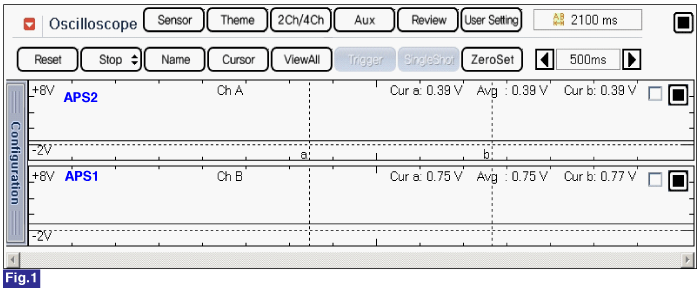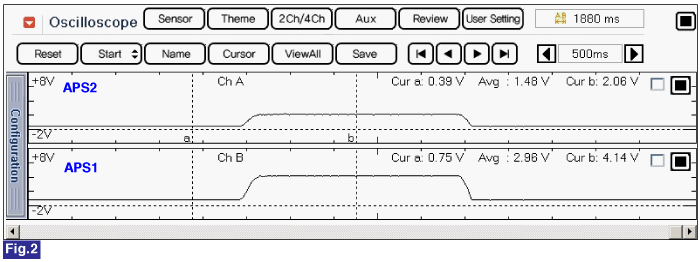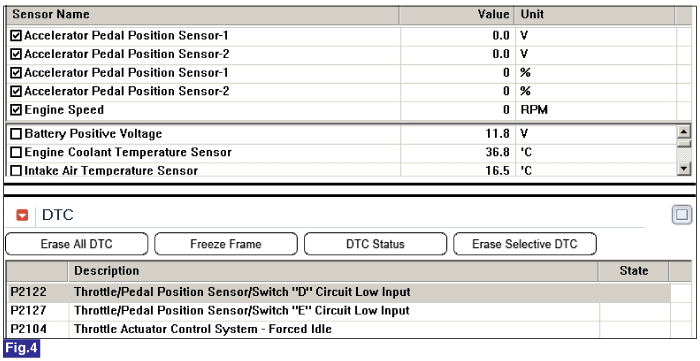

The Electronic Throttle Control(ETC) system is made of the components throttle body, Throttle Position Sensor(TPS) 1&2 and Accelerator Position Sensor(APS) 1&2. The APS is mounted in the accelerator pedal to detect the opening angle of the accelerator pedal. It has 2 sensors to detect the accelerator position and a malfunction of the accelerator position sensor. The ECM judges the current opening angle of the accelerator pedal from APS1&2, and the ECM controls the throttle motor based on these signals.
Checking output signals from APS 1 and 2 under detecting condition, if output signals difference between APS 1 and 2 are detected more than 4.5% for the specified number of times., ECM sets P2138. And then MIL(Malfunction Indication Lamp) turns on.
Item | Detecting Condition | Possible cause |
DTC Strategy |
•
This code detects a correlation error between APS 1 and APS 2. | 1. Poor connection 2. Open or short in APS circuit 3. Faulty APS 4. Faulty ECM |
Enable Conditions |
•
Ignition "ON" | |
Threshold value |
•
Difference between APS1 and APS2 Normalized values > 4.5% | |
Diagnosis Time |
•
Continuous | |
MIL On Condition |
•
1 Driving Cycle |
Pedal Position | Output Voltage(V) [Vref = 5.0V] | |
APS1 | APS2 | |
C.T | '0.7 ~ 0.8V | 0.29 ~ 0.46V |
W.O.T | '3.85 ~ 4.35V | 1.93 ~ 2.18V |




Fig.1) Normal waveform of APS1 & APS2 with no acceleration
Fig.2) Normal waveform of APS1 & APS2 with acceleration
Fig.3) Normal data of APS1 & APS2 at ig on.
Fig.4) Abormal data of APS1 & APS2 when APS1 & APS2 circuit open
Signal waveform of APS 1 & 2 shows that APS 2 increases voltage just half of APS 1 voltage increase when accelerating.